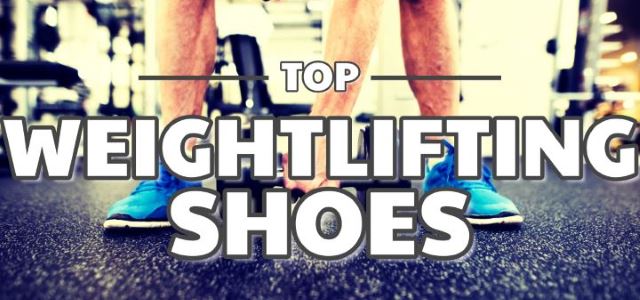
Do you want to get your weightlifting or workouts done properly?
Want to lift more than ever?
Even if you think you’re unfamiliar with weightlifting shoes, you’ve probably seen them without even realizing it. These are the weight training sneakers that you see Olympic powerlifters wearing.
They offer a lot of benefits and can really help you improve the way you lift. If you don’t have a pair of these lifting specific shoes or are looking for a new set, there are plenty of options. However, choosing the best pair can be challenging. For those less educated, yes, footwear really does matter, just like your gym bag!
Having the right footwear is so important in gaining adequate support and anchoring your feet to the floor. They can really enhance your performance. As anyone who has deadlifted will know, the technique is important and the correct shoe will help you stay in the right position and form.
Whether you are a Cross Fitter or a dedicated powerlifter, we are here to help you make an informed purchase decision, the top five weightlifting shoes have been compiled and analyzed based on our testing.
If you are a lady, be sure to check out weightlifting shoes for women guide.
5 Top Shoes For Weightlifting
| Rating | Review | |||
|---|---|---|---|---|
| #1 |   | Adidas Adipower | Click For Adidas Adipower Price | Best overall. Perfect for heavy lifting. |
| #2 |   | Inov-8 Fastlift 325 | Click For Fastlift 325 Price | Stable and robust but also lightweight. |
| #3 |   | Adidas Powerlift 3.1 | Click For Adidas Powerlift Price | Great for cross-training and weightlifting |
| #4 |   | Reebok Crossfit lifter 2.0 | Click For Reebok Crossfit Lifter Price | Exceptionally comfortable and perfect for squats |
| #5 |   | Converse All-Stars | Click For Converse All-Star Price | A strong all-rounder and lightweight |
#1 – Adidas Performance Adipower Weightlifting Shoes
In our opinion, the Adidas Adipower shoes are the best weightlifting shoes available on the market and on our list. From the brand of everything sports oriented and athletic, they’re quite popular with professionals and amateurs alike, and for good reason. They feature a TPU (thermoplastic polyurethane) heel for increased stability and a superb blend of grip too.
The training shoe also includes a reinforced PU-coated rubber which makes the shoe more durable and flexible while also providing great ventilation. Unlike others reviewed here, this shoe is not a hybrid lifting shoe. It’s a shoe designed purely for hardcore lifting heavy weight (i.e knee sleeves and wrist wrap wearers) making it one of the best lifting shoes around. So it isn’t recommended for other workouts like CrossFit, although some claim otherwise.
Did you know? Adidas invested €153 Million into research and development in 2018
The shoe has the Adidas striped design and weighs around 16 ounces which is considered a little heavier than other top brands but still lighter than others. They allow you to plant your foot properly without holding you back in terms of mobility by feeling too heavy on your feet.
In terms of the heel height, the Adipower features the standard ¾ of an inch raise giving you a near perfect foot position for stability and support in your squat movement and deadlifts. Another reason that makes these some of the best powerlifting shoes if the elevated heel is made of TPU.
This is a lightweight, yet rigid material that is considered the greatest material for workout shoes. The material makes the Olympic weightlifting shoes durable and sturdy as well as abrasion resilient. With TPU shoes you won’t have to worry about the heels compressing under heavy loads or wearing out from frequent use. This can help prevent injuries, too.
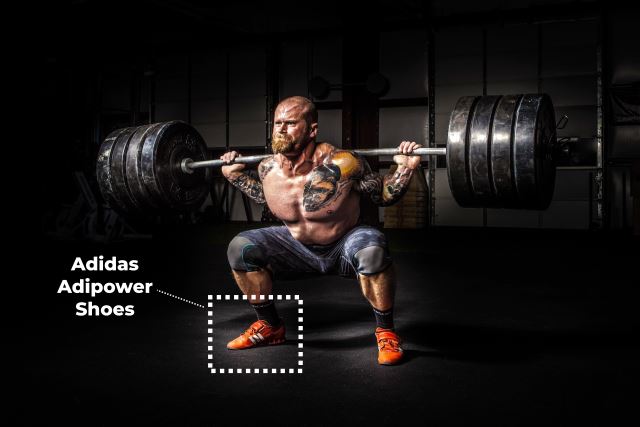
What makes this one of the best lifting shoes around is that Adidas boasts about this shoe’s weightlifting-engineered chassis that features a solid and stable outsole that allows you to feel your connection to the ground beneath your foot better than other models. This is important in weightlifting since you want that traction and be able to grip the floor as you push.
As for the leather upper part of the shoe, the Adidas Adipower shoes feature PU-coated leather and mesh. The combination of the two makes the shoe breathable, flexible, and long-lasting. Since the leather upper has been coated, they’re quite resilient to abrasions and rips which can occur from frequent use or mishaps with equipment. If any scuffs do occur, the material can be easily cleaned by rubbing the marks away. The mesh used in the tongue allows for proper airflow to prevent your feet from sweating a lot. That being said, when we tested them, there were times that we wished that they were a little more breathable.
While these Adidas squat shoes are flexible, they do take some time to properly break-in, as most weightlifting shoes do. Users have said that it actually took them over a week of constant wear to get fully comfortable in these. However, once they did break them in, the shoe is said to conform perfectly to your feet creating a supportive and snug fit.
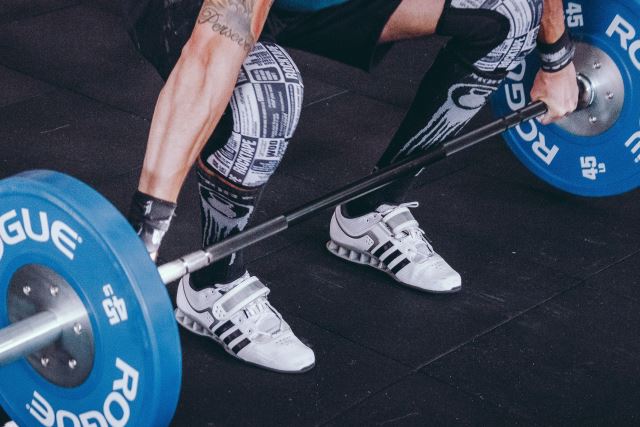
Unlike older Adidas models, the Adipowers feature one strap on the upper part of the shoe close to the top of the tongue. While this provides security to the ankle, some lifters prefer additional straps or a lower metatarsal strap. This is more of a personal preference as the combination of the strap and the laces here seem to be quite sufficient. It also makes for a sleeker minimalist design and the ankle is safely supported.
The Adidas Adipowers are some of the best lifting shoes are available in a variety of different colors and in a wide range of sizes so there is something for everyone. All in all, these shoes are considered to be one of the best pairs to buy thanks to their durability, their functionality in the weight room, and the techniques that Adidas have used to create them. Another honorable mention is the Adidas Leistung 16. These shoes are also some of the best weightlifting shoes in the business but they are generally a lot more expensive and are suitable for the experienced lifter. If you have the money to spend, be sure to check them out.
Key Features
- Sturdy TPU midsole for a secure and safe foothold
- Hook and loop instep strap for foot integrity and enhanced stability
- Anti-slip rubber sole and 20mm heel raise for great dependability
- Vent flow openings for extra breathability
- Strong and lightweight structure from unique chassis design
Some of the pros of the Adidas Adipower are:
- Stable heel at a perfect height
- Above-average ventilation
- Adequate heel height
- Ideal for squatting and snatching
- Durable and resilient upper materials
While the shoe is considered one of the best available, there is always room for improvement. Some of the cons are:
- Extra room in the toe box
- Made for narrower feet
- Lack of cushion in the toe box
- Lack of a lower metatarsal strap
- Only sized for men
- A bit pricey in comparison
#2 – Inov-8 FastLift 325 Cross-Trainer Weight Lifting Shoe
Known for their wide variety of fitness shoes, Inov-8’s FastLift 325 is one of the few different weightlifting shoes the brand makes (the FastLift 335 is a great shoe too!). Like the other models, this one is known for its minimalist design as well as its ability to perform well in the gym. This makes them some of the best weightlifting shoes that are also multipurpose.
They’re lighter than other shoes but also feature a lower heel elevation (around .65 inches). This lower heel wedge height is considered beneficial as it makes it a little easier to transition through different movements while weight training.
The Inov-8 325 shoes provide solid stability and traction. It features a strap over the foot for additional security. They are made with the same TPU PowerTruss construction that is used in other top brands like Adidas and Nike. This shoe is also breathable thanks to a lightweight mesh upper used in the design. While they don’t feature a leather upper like stiffer weightlifting shoes (so they’re suitable for vegans), they still give you support while being easier to break in and a little more comfortable. This flexibility allows for quick transitions but still aids postural form when lifting. The shoe only comes in all black or black with slight orange accents.
Key Features
- The lightest weight lifting shoe on the market
- Meta-flex technology is stable but allows fast transitions between exercises
- Power-truss offers superb stability and a dependable base for lifting
- Precision fit
Some of the advantages of this shoe are:
- Wider toe box for better gripping, lateral stability and balance
- Mid-foot strap for extra support
- Versatile enough to use for different activities
Some of the downsides are:
- Upper material may not be as durable as other shoes
- Shoe isn’t rigid like other brands
- Less foot security than other shoes
- Below-average heel height
#3 – Adidas Powerlift 3.1 Weight-Lifting Shoe
Another from the world renowned manufacturer, Adidas. If you’re new to powerlifting or are just a casual lifter, the Adidas Powerlift 3.1 are a great choice. They are lighter than the typical Olympic weightlifting or powerlifting shoes (around 15 ounces) and resemble more of a cross-trainer. This makes them a useful transition shoe that can help you get used to normal weight lifting shoes without shocking your feet too much or requiring frequent use to break in the shoe. They are some of the top weightlifting shoes for those who are new to this type of footwear. Similarly, if you do CrossFit or similar workouts, these can be used for that due to their hybrid nature.
It has a slightly below average heel height of around 0.6 inches, but that is what makes it an effective hybrid shoe instead of a strict weightlifting shoe. While the typical ¾ inch heel height is effective for squats and provides additional stability, this lower heel drop makes this shoe more versatile. So you can use it during other workouts instead of stopping to change your shoes. Similarly, this won’t make you feel like you’re falling forward when transitioning from power movements to strength movements.
The elevated heel is made from a lightweight, yet durable material called high-density EVA. This is a quality compound but not as durable as TPU which is used in other Adidas weightlifting shoes. EVA compresses more than TPU which can be a problem when lifting heavier weights. This change was done to make the shoe appealing to people who practice cross-training and aren’t solely powerlifters or weightlifters.
As far as the rest of the shoe goes, it’s made of mesh and a lightweight leather upper making them airy. The open toe box allows for good flexibility, too. While the mesh is great for breathability, there is also mesh around the upper part of the high heel. This can make the shoe too flexible for some people who prefer more stability in their heels.
In terms of the strap, the Adidas Powerlift 3.1s have one thick strap around the top of the tongue to keep your feet secure and ankle supported. While some lifters like multiple straps for additional security, the thicker size of this strap actually offers more security than other shoes that have one thinner strap.
This shoe comes in a variety of sizes as well as multiple colors including standard white and black and flashy colors like bright yellow, red, and blue. While this might not be something you’re concerned with, having different designs to choose between can be a nice way to make your powerlifting shoes more personal. In terms of the price, you can often find these for a cheaper price than most lifting shoes and they are great alternatives to the Adidas Adipowers if you have a lower budget.
Key Features
- EVA heel offers steadiness for most weights
- Air mesh collar for maximum breathability
- High density but lightweight die-cut midsole
- Adiwear rubber outsole for durability
Some of the pros of this shoe are:
- Lightweight and breathable upper
- Cheaper than other models
- Versatile functionality
- Extra-wide design for wider feet and improved balance
Some of the less-than-favorable features are:
- Less-durable heel
- Lower-than-average heel height
- Not great for serious powerlifters
- Might not last as long as other shoes
#4 – Reebok CrossFit Lifter 2.0 (Weightlifting) Shoe
This updated version of the Reebok CrossFit Lifter was released back in 2014. This improved on its predecessor (the Reebok Legacy Lifter) in many different ways. While is it has some similarities to the Reebok Legacy Lifter, it has plenty of differences too. It’s more of a hybrid cross-training shoe than a strict Olympic weightlifting shoe making it more versatile.
If you participate in CrossFit, this is a great CrossFit shoe since it combines the functionality of a weightlifting shoe with that of a fitness sneaker. For example, if you are doing CrossFit and your WOD has weightlifting exercises in it, you can use these training shoes instead of worrying about not having the stability you want from a standard fitness shoe.
While some hybrid shoes use a lower-than-average heel height to make the shoe versatile, the CrossFit Lifter 2.0 features the standard ¾ of an inch heel raise. This will give you the perfect support and stability for deep squats and heavy lifts. Unlike the original Lifter, the high heel in this shoe is made of PEBAX TPU making is softer than other squat shoes while still being durable. That being said, it’s also slightly more compressible than heels made of a TPU construction. In addition to this, the shoe doesn’t have the perfectly flat sole that most weightlifting shoes have. Instead, the rubber sole base resembles that of a normal running shoe.
The overall material of these Reebok shoes is synthetic leather and mesh upper creating a breathable shoe that can help prevent your feet from sweating as much during a workout. Users report that the fabric feels less stable than other top brands but since the shoe is supposed to be for more than weightlifting this is to be expected.
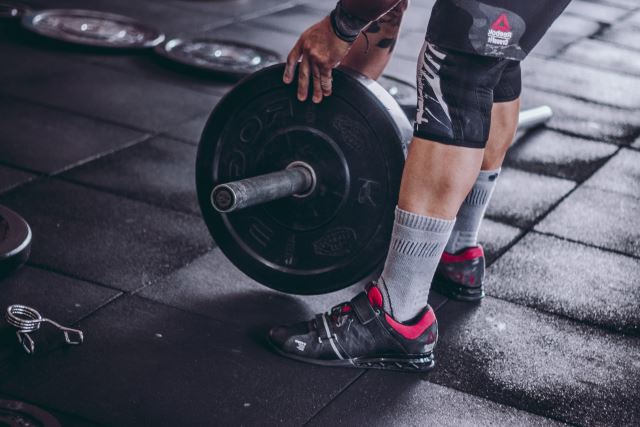
For security, these Reebok training shoes feature one strap made of synthetic leather. This is different than its predecessor which features two straps for additional security. When combined with the laces, this strap can help you achieve a tight fit that will help you feel stable and secure as your train.
The Reebok CrossFit Lifters come in 10 different colors and a wide range of sizes which makes them suitable CrossFit shoes for women as well as men. According to users, they are true to their size and are considered to have a normal width. This means that if you have a wide foot, you might have to get a slightly larger size than you normally would or opt for something that is made for people with wide feet.
Key Features
- Dual lace up and hook and loop closure for a secure fit
- POWERBAX midsole
Some of the pros of this shoe are:
- Versatile design great for CrossFit
- Breathable and flexible upper material
- More comfortable than other shoes
While this is a quality shoe made by a reputable company, there are some downsides worth noting:
- Heel compresses too much
- Outsole has less grip than other models
- Isn’t stable enough for heavy loads
#5 – Converse Chuck Taylor Training Shoes
This might come as a surprise to you, but the ever-popular Chucks are great weightlifting and simple cross-training shoes. Featuring a canvas body with a thick vulcanized rubber sole, you get a light shoe that has a breathable upper and is durable. They also have an OrthoLite insole that gives the foot some cushioning foam providing some additional comfort. The eyelets in the shoe also create optimal airflow helping your feet sweat less than they would in other shoes.
As you know, Chucks can be used for daily use as a street sneaker, too. This is great if you’re on a budget and really don’t want to spend money on a shoe that would only serve you in one way. With Chucks, you can wear them when lifting iron, cross-training, or walking down the street. While other versatile shoes tend to lack the overall functionality of a standard weightlifting shoe, Chucks are considered to be one of the best shoes for deadlifts, a good squat depth, the snatch and the clean & jerk—some of the most common lifts in training.
Chucks feature a flat sole with good traction and that helps you plant your feet while the lack of heel cup in the shoe allows you to fully drive into the ground when lifting heavy. While there is no lifted heel like squat shoes, the flat, thick sole gives you a good foundation with stability and support without throwing your heels higher. More so, this lack of a heel raise allows you to feel the ground better as you push. You can get a better sense of how your foot is planted which helps you to be more aware of your body.
Similarly, the lack of heel height will force you to squeeze your legs harder in every lift improving your technique and maintain proper form as you progress. Think of this as a crutch being taken away from you. When you don’t have that extra artificial support, your body will be forced to support itself and will be stronger for it.
There are no straps on Converse Chucks, but they are still quite secure on the foot and the area at the front provides a small amount of protection of the toes. High-top variations can be laced up the ankle for proper support and ankle compression. This can make an excellent high top weightlifting shoe and as long as you’re tying your shoelaces tight enough, you won’t even miss a strap for foot security. That being said, there are plenty of powerlifters who use the low-top Chucks tied tightly.
Since Chucks are used as a casual shoe, they are found in a wide range of sizes (for both men and women) along with a variety of colors and patterns. They’re also quite affordable and can be found for very low prices in some cases. You can buy different ones for different purposes and rotate them during your workouts to get the most out of your purchases.
Key Features
- Lightweight and breathable upper
- Ortholite insole
Some of the pros that may help tip the scale in your purchase decision are:
- One of the most affordable options
- Versatile for workouts as well as casual wear
- Can be worn indoors or for outdoor pursuits
- Used by famous athletes including Arnold Schwarzenegger
- Flat sole provides support and stability
- Upper material is light and airy while still being durable
The downsides, while excusable for some, include:
- Lack of heel raise
- No straps across the foot
- No rigid structure
- Not made strictly for weightlifting
#6 – Nike Romaleos 3
The Nike Romaloes 3 are the latest version of the famous Romaleos line, being an updated version of the Romaleos 2. They are originally designed as a lifting shoe for a number of different strength sports. You can spot the difference between the 2 versions and the Nike Romaleos 3 added a single strap closure system to the midfoot of the shoes vs the 2 straps found on the Romaleos 2, keeping them securely on the feet.
Just like the previous version, the Nike Romaleos 3 comes in a soft rubber sole or hard rubber sole version. The weight of them are slightly different (the harder sole weighs 15oz while the softer is 13oz) but they are still both much lighter than other weightlifting shoes. As an example, Reebok Legacy Lifters weigh 20oz! This lightweight aspect can be a key difference to some lifters.
The heel height of the Nike Romaleos 3, is 0.79 inches which makes it slightly higher than the average 0.75 found across weightlifting shoes. This extra heel height is good for lifters who need an extra bit of help in their range of motion but don’t want to go for a shoe with a more elevated heel (over 1 inch). Some science and technology has gone into this training shoe as part of the reason that this pair of shoes are so lightweight is due to the honeycomb TPU heel. Nike designed this to limit the materials required and thus weight. The heel is lighted than the Nike Romaleos 2 but just as strong. It looks cool too! But if you’re an old school lifter who likes a classic wooden heel, these might not be the right training shoes for you.
Another reason for the weight of the Nike Romaleos 3 is the upper material. These use Nike’s Flywire material which is regarded as being lightweight and also flexible. This makes them quite flexible even on their first wear which is a great advantage over other shoes that need to be “worn in”.
These were created for a hybrid style of workout exercise while still being suitable for those heavy Olympic lifts which make then a great versatile set of shoes.
Key Features
- Interchangeable insoles offering firm but light support
- Neutral arch support
- Rubberized sole and synthetic upper
Some great advantages of the Nike Romaleos 3s are:
- Lightweight feeling
- Solid honeycomb heel
- Durable and yet breathable due to the leather and mesh material
And some downsides might be:
- Not cheap
- The tongue has the potential to rip
There is no shortage of weight lifting shoes on the market for lifters. A good weightlifting routine can go a long way but whether you’re looking for something to use casually or you’re a dedicated professional weightlifter looking for the best shoe available to improve your training, you’re sure to find something to fit your needs and preferences.
Knowing what to look for and what to avoid in weightlifting shoes can help you shop for a new pair with confidence while the reviews of these five models can help you narrow down your search or serve as a jumping-off point for your search. Remember to compare different models to each other so you don’t settle on the first thing you find. Use the buying guide here and be sure to read user reviews for anything you’re unsure about.
How We Selected These Weightlifting Shoes
Not all footwear is created equal and as we covered earlier, you don’t need sport-specific athletic shoes if you are not a lifter or super serious about your progression and development. But if you are keen and eager to excel at your sport, then having the best gear can mean the difference in having the edge over the competition or losing. Maybe you are trying to beat yourself at a previous personal best or looking for a great get a gift for a weightlifter. Making progress is so very important and we could all use a helping hand from time to time. That is why we create these guides so that we can take the pain out of hours of research so that our readers can get back to doing whatever hobby or passion that they love.
Our guide has been designed to amalgamate what the top retailers have to offer and summarize our findings. We took into accounts the most important aspects such as support, security, grip, fit and value to provide a useful range to suit an array of budgets.
Why You Need to Use Weightlifting Shoes
This type of footwear may seem expensive and many people wonder if weightlifting shoes are worth it. But there are many great reasons why it’s a good idea to consider a pair:
Raised Heel – Squat & Deadlift Balance
One of the distinguishing factors of the top weightlifting shoes is their raised heels. This is a very important feature that plays a big role in ankle flexibility. With better ankle flexibility, you’ll be able to sink deeper into your squats making them more effective without fear of rolling your ankles under the heavy load. This is because while your heels are raised, your body can remain straighter despite dipping deeper in your squat. Getting the perfect posture will protect your back and torso from injuries, too, since you’ll be properly aligned.
Firm Soles – Safety When Lifting Weights
Some of the best weight lifting gloves will have thick padding and offer plenty of support over normal gloves. Similarly, Olympic weightlifting shoes’ soles are thicker than other training shoes and made of firmer material when compared to normal running shoes. This allows you to push off and land with heavier weights than you could without that support helping you train harder. The best powerlifting shoes are developed to hold their shape instead of sinking under the pressure of your body and the weight on the bar. When you wear regular cushioned gym shoes while weightlifting, the sole compresses due to the weight of your own body along with the barbell you’re lifting. This is likely to throw you off balance which can lead to injuries like torn ligaments and tendons.
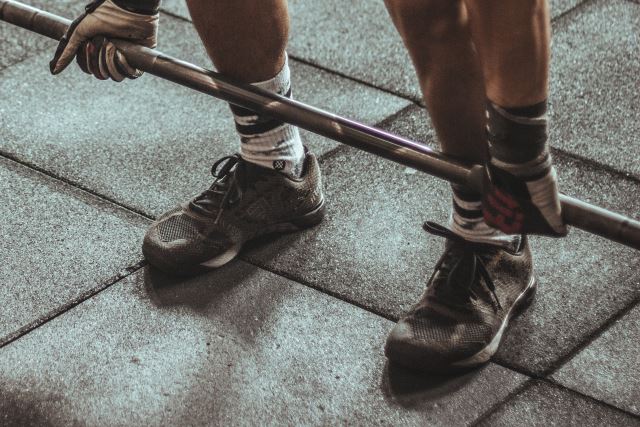
Weightlifting Shoe Stability
While you can get away with wearing normal running shoes as you lift weights, the benefits of using weightlifting shoes instead can help you in significant ways if you are an enthusiastic lifter. The stability and support that they provide alone are enough reasons to invest in a pair. By decreasing your risk of injury you’ll be able to keep training and improving instead of being sidelined by pulls or tears. Additionally, considering that powerlifting competitively (and lifting heavy weights in general) isn’t an overly expensive activity, investing in a high quality pair of weightlifting shoes is more than worth it.
Types Of Weightlifting Shoes
We have mentioned Cross-fit a little bit in this guide and we singled out this type of activity for a special reason. This was because this style of exercise is growing in popularity and lifting is a core part of a CrossFit WOD along with quick-paced transitions into other activities such as rope climbing, sprinting, the squat and much more. These sorts of activities demand different movements with muscle and joint responses. Whether you are a CrossFit enthusiast or keen lifter, the pair of shoes you have will also need to cope with this.
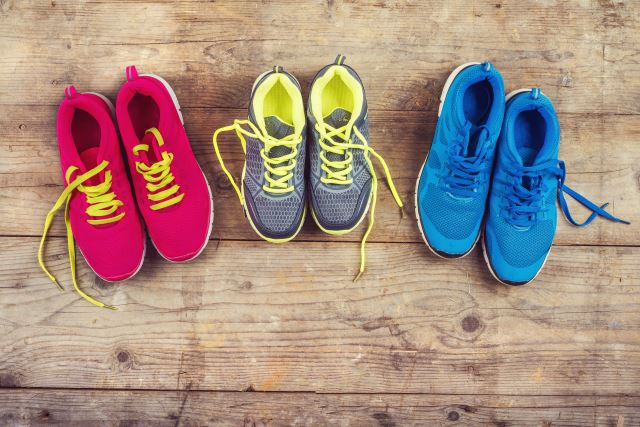
You may be considering a more cushioned model of weight lifting shoes. Especially if you are the kind of clumsy person who might drop heavy weights on their feet or toes! But an excessive volume of cushioning within the midsole can inadvertently compromise your form and lifts so anything that is too luxurious should be avoided. This certainly true if strength and stability for big compound lifts is what you desire.
For those that perform a lot of dead lifts or squats, heel height is something that should be considered fully. Especially when it comes to wide or narrow legged squat, stiff legged or Sumo deadlifts, etc.
How to Pick the Best Weightlifting Shoes
When shopping around for powerlifting shoes for men or women, there are always certain things you should keep in mind. The last thing you want is to have a poorly made weightlifting shoe fail you during your lifting session or when you are halfway through a heavy squat.
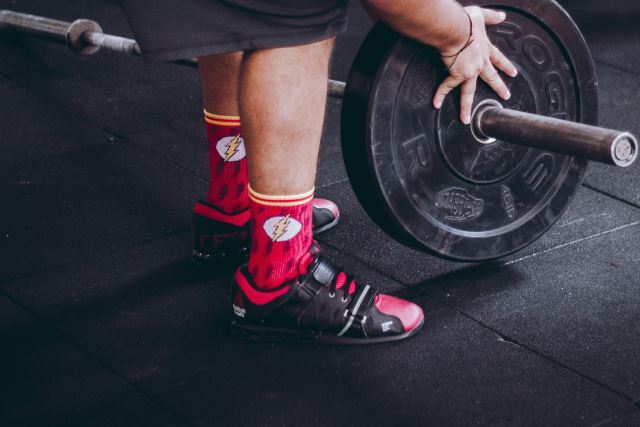
Knowing what to look for in a quality product will ensure that you’re spending your money well while also getting a shoe that will function properly and cope with stress. As you shop for your next pair of weightlifting shoes, keep these features in mind and see how your options shape up against them.
Stability and Support For Weightlifters
Since the main benefits of a good pair of weightlifting shoes are the support, stability and posture improvements they provide, you obviously want to make sure that the pair you pick is designed to support heavy lifting. If shopping in person, be sure to check the quality of the soles and check that the shoe is stiffer than a normal running shoe or a shoe for supination. If you’re shopping online, you can read reviews to see what users have said about the training shoes in terms of its stability and support.
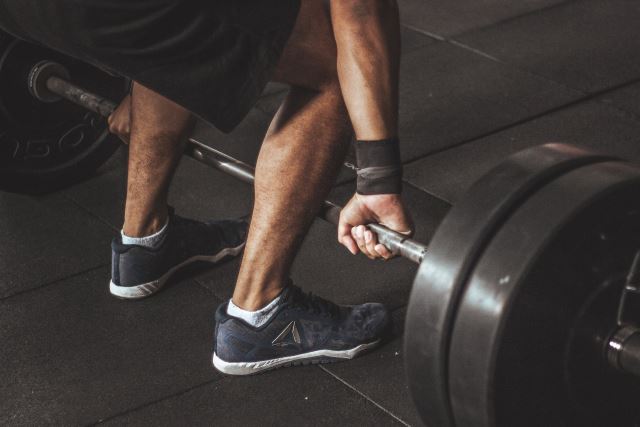
In general, the best shoes for weightlifting will be rigid enough that your ankles will feel supported while the sole won’t sink under the weight of your workout. They should also offer support for your knees and posture through that stability. If you know you need high levels of support for your feet and knees, making sure that you choose a weightlifting shoe that is more rigid is a better choice for you.
While a lot of newer models use modern materials, there are weightlifting shoes that still use wood in their designs to make them firm and rigid. That comes down to personal preference, though. Instead of focusing on the material used, just make sure that the sole doesn’t compress easily under pressure.
Price & Cheaper Footwear
Like anything you buy, you have to take the price of the product into consideration, especially if you’re on a budget. You might find a great pair of shoes but they might be too expensive. Similarly, you might be stuck between two shoes with the price being the determining factor.
In general, weightlifting shoes are more expensive than other athletic shoes, but they’re worth the investment. Here, you just want to make sure that the pair of shoes you pick are worth their price. But if you are on a tighter budget, take a look at our guide to cheap lifting shoes.
Lifting Capacity
Your new weightlifting shoe should be able to support your body weight plus the weight you’re lifting. Most quality shoes are made of materials that can withstand heavy loads and maintain their shape and firmness for a long period of time. You should keep your own squats and lifting capacity in mind. If you know that you’re constantly upping your poundage, you want a shoe that can keep up with you as you increase your load.
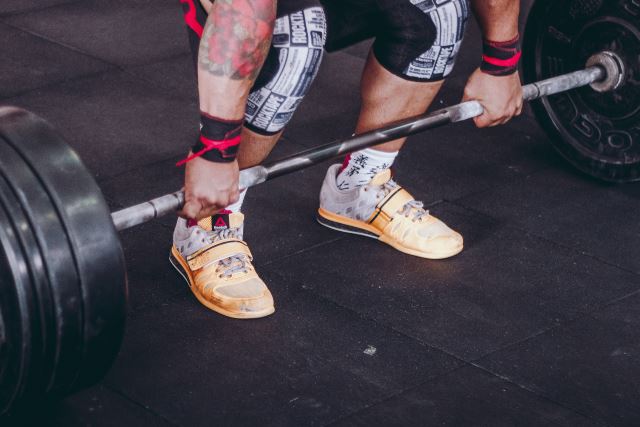
When shopping, you will be able to tell the quality of the materials by physically holding and trying on the shoe. However, if you’re like most people and doing most of your shopping online, you can usually find the materials of the lifting shoe somewhere in the product description or you can research the product and see what materials the manufacturers used. User reviews may also make mention of this factor with people discussing how the shoe held up in their own training sessions.
Fit & Finish Of The Lifting Shoes
When you’re buying any kind of shoe, you have to make sure it fits properly. Even if you plan to buy your weightlifting shoe online, consider stopping by a physical store to try the shoe on before buying it. You don’t want to find a great shoe and then have to keep sending it back because it doesn’t fit right.
If you push into a shoe that is too small for you, it can pinch your toes and feel uncomfortable. This can hinder your ability to properly lift your weights or cause you to shift in the middle of a lift and injure yourself. On the other hand, wearing a shoe that is slightly too big can affect your stability, control, and positioning as your foot will splay out too much as you dig into the floor. This lack of stability can affect your form and technique, lead to injuries and worsened performance. Ideally, you will want to try a simple squat in the shoes to see how they feel.
When checking the size, the shoe should fit the length of your foot, obviously, but it should also fit the width of your foot properly. In weightlifting shoes, the toe boxes are sometimes narrower than regular gym shoes. This can cause pain or discomfort if you have a wider foot so you have to take that into consideration when buying your pair.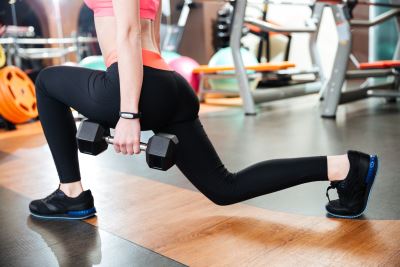
Here, reading user reviews can help a lot. People will sometimes say whether they were happy with the fit or if they recommend you buy a half-size or more up or down. Similarly, the product description might tell you that they run big or small and how narrow or wide the forefoot box is.
In terms of the finish, you have to make sure that the shoe you’re choosing is durable enough to withstand the strain on them as well as the frequent use they’ll face. They shouldn’t lose shape or wear out quickly. As long as the shoe is made of quality materials this shouldn’t be an issue, but it’s something to check out before investing any money in a shoe.
Shoe Design
Now, this is the most subjective feature that you should consider when buying a weightlifting shoe. If you’re serious about your training, you more than likely don’t care what your shoe looks like. However, in a world where fashion is considered as much as a function for things like training shoes, brands have created stylish looking weightlifting shoes to fit people’s personal preferences. If this is something that would sway your purchase decision, take the patterns or colors of a shoe into consideration.
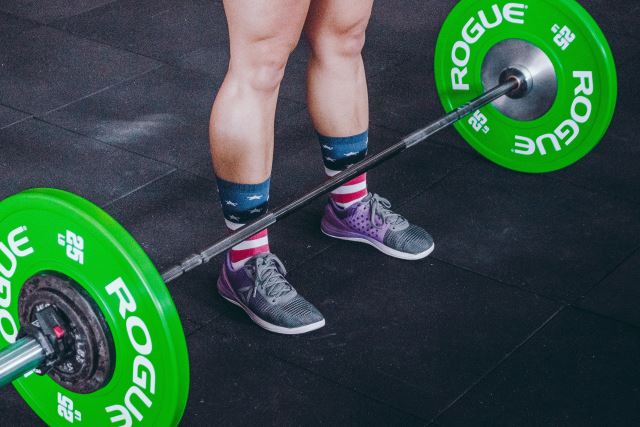
Different models may also vary in heel height with some having higher heels than others. This is an important part of the shoe’s design since it’ll affect your ability to generate power as well as leverage. Most quality weight lifting shoes have a heel height of around ¾ of an inch but there are ones with higher and lower heels. Consider your own needs and preferences and choose a shoe with a perfect heel height to match them.
Finally, the materials used should also be considered. As it’s already been mentioned, the better the materials used, the better the shoe. If a company uses cheap materials, the shoe can wear out quickly and won’t withstand the stress you’ll be putting on them. The material should also be breathable so your feet don’t sweat too much! If you can’t physically examine the shoe, do some research on the particular shoe you’re looking at and see what materials were used to make it.
As you shop for a new pair of gym shoes, examine the shoe (or at least the product description) and figure out how each potential purchase matches up to these conditions. Make sure your final decision matches all of your preferences and requirements while also fitting into your budget. You can do the same as you read through the five reviewed weightlifting shoes here.
Weightlifting Shoes FAQ
- Q: What is a weightlifting shoe made from?
- Answer: A lifting shoe will often have a more pronounced heel than a trainer. This isn’t because powerlifters and strongmen are short! They have been designed this way to ensure that a specific range of motion can be met. This is particularly important when power lifting or training with weights where good form and function are crucial. A raised heel helps the wearer to get the perfect angle to get deep into heavy compound movements, such as squats, and without compromising on safety or stability. Not only is the heel higher, but it is stiffer too. The boot often has a high top around the wearer’s ankle to assist in postural security and to aid stability. Many people find that this type of footwear uses straps more than laces across the integrity of the enhanced by this.
- Q: What are the benefits of using weightlifting shoes?
- Answer: Lifting shoes are mainly designed with a principal function in mind. That is to allow the wearer to hoist a heavy a weight as possible. Therefore, they are not like regular cross training or running shoes that you can quite easily wear on the street or maybe out for a last-minute drink with your friends. They are designed to be a reasonably stiff piece of footwear because of how supportive they need to be. They are not the most comfortable athletic shoes in the world. It’s also important that the integrity of the soles are not compromised as strong traction is required. Hence, they are intended for gym use purposes mostly.
- Q: What sort of fit do I need?
- Answer: In a perfect world, you need your weight training footwear to have a snug fit. When extreme weights are being lifted, it’s all about stability and grounding your feet and your core. You still need to be able to wiggle your toes but you really don’t want them to allow too much movement otherwise. It’s understandable that nobody wants dead feet at the end of a squatting session but a tight fit is almost essential. You want to be able to get deep into your lift with the right posture without the fear of toppling or falling over.






Leave A Comment